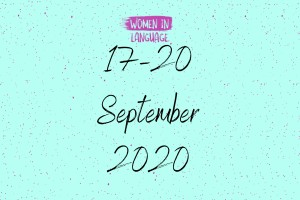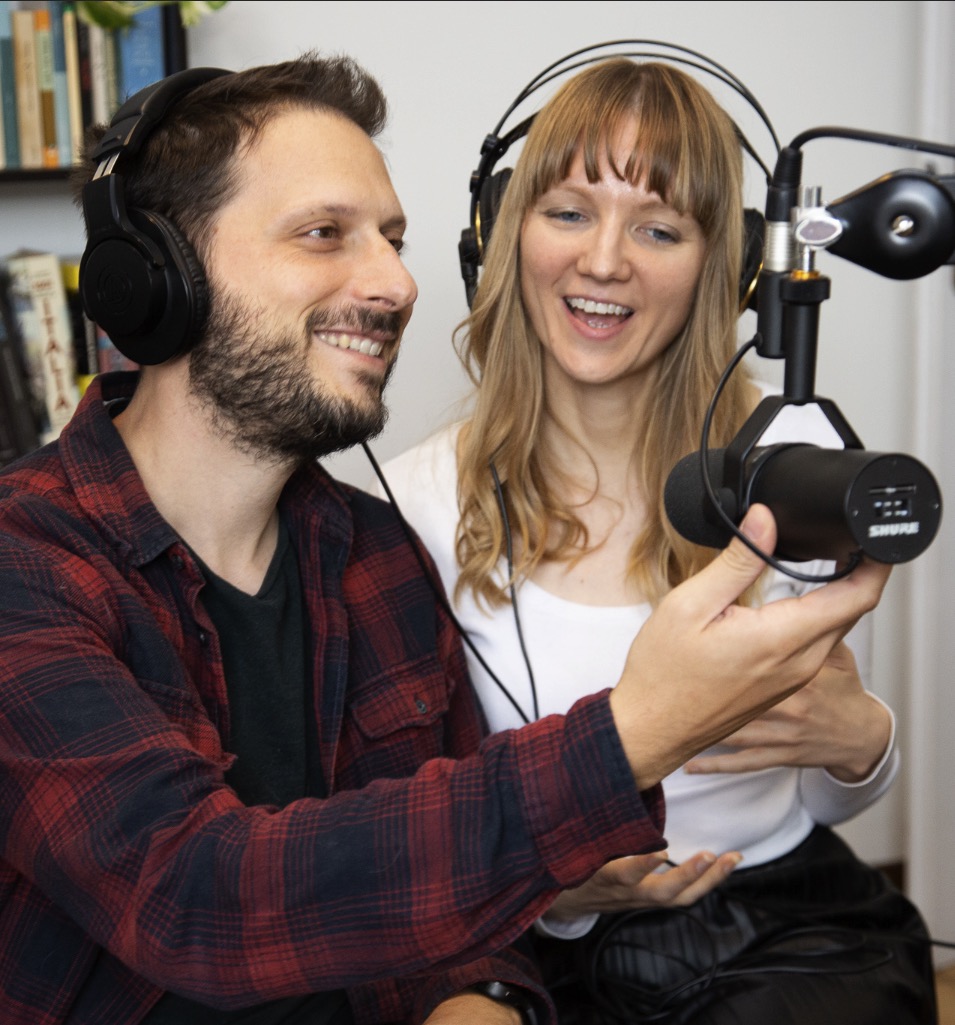- Essential Italian travel phrases
- How to roll your Rs
- The best way to remember Italian words, phrases and grammar
- Action points you can follow to make sure you succeed
A 4-step roadmap to learning Italian
What should I learn first? Which method should I use? How can I stay motivated? When you learn a new language, there are so many things to think about that it's easy to get lost. In fact, one of the main things that can slow your progress in Italian is a lack of clear direction. If you want to get somewhere fast, it helps to have a clear roadmap. Here, you'll find a 4 step action plan you can follow to start learning Italian successfully:- Find your motivation (know why you want to learn Italian).
- Learn the essential phrases (so you can start talking straight away).
- Go into detail (start learning grammar, vocabulary and pronunciation).
- Take action (so you can achieve your goal of speaking Italian).
1. Find your motivation
Learning a new language takes time and commitment. If you're not clear on your reasons for wanting to speak Italian, somewhere down the line you may find yourself wondering if it's really worth it. On the other hand, if you're excited about learning Italian, that enthusiasm will pull you to your desk, even on days when you don't really feel like it. When you're motivated, it's easier to overcome the obstacles that normally get in the way of learning a language, like lack of time or tiredness. As the saying goes:If you really want to do something, you'll find a way, if not, you'll find an excuse.
That's why motivation is number 1 on our roadmap. Before you start learning Italian, take some time to get excited about it. Think about all the awesome things that will happen when you speak Italian, and come back to them whenever you need a motivation top-up. If you need a little inspiration, here are my top 3 reasons for learning Italian:You'll experience the real Italy
Italy is one of the most popular destinations in the world, and with good reason! With stunning countryside, Mediterranean beach towns, a rich history and arguably the best food and wine in the world, Italy has a lot to offer. But if you don’t speak the language, it’s difficult to get out of the tourist bubble. You’ll get so much more out of Italy if you understand and speak a bit of the language. It’s all part of the experience: laughing with the waiter, chatting to a little old lady on the train (with the help of a few gestures!) or playing with Italian kids at the beach. When you have a go at speaking Italian, you’ll come away with better holiday memories. Even a handful of phrases can help you feel like a local. It’s a great feeling when you can order a meal or ice-cream in Italian and they understand what you’re saying. You can also get insider recommendations from Italians about the best places to go in their town - no more frozen pizza and reheated pasta at tourist restaurants! When you have a go at speaking Italian, you’ll come away with much better holiday memories. You can get to know some of the locals and you'll feel more confident wandering away from tourist areas.
When you have a go at speaking Italian, you’ll come away with much better holiday memories. You can get to know some of the locals and you'll feel more confident wandering away from tourist areas.You'll get to hang out with Italians
There's an Italian saying: “il dolce far niente”, which means the sweetness of doing nothing. Italians are masters of the art of living: most have a relaxed pace of life and love meeting new people. This is a huge plus when it comes to making Italian friends and practicing italiano with the locals. When you have a go at speaking, Italians are usually patient and friendly. And many feel more comfortable speaking Italian compared to English (especially in small towns and villages). This gives you a real reason to use your Italian, which helps you learn faster. Italian people know what’s important in life: they’re not constantly running from one thing to the next and they always have time for you. This is a huge plus when it comes to practising italiano with the locals!
Italian people know what’s important in life: they’re not constantly running from one thing to the next and they always have time for you. This is a huge plus when it comes to practising italiano with the locals!You'll feel a little bit Italian, too
Romantic, musical, expressive - people often say Italian is the most beautiful sounding language in the world. When you learn Italian, you can have loads of fun getting into the role and trying to adopt the distinctive accent.
2. Learn essential Italian phrases for travellers
Hopefully you're now feeling excited about learning Italian and ready to get started. Before we dive into the details like grammar and pronunciation, it's a good idea to get some essential phrases under your belt so you can communicate straight away.
Don't worry if you say things a bit wrong, or you can't understand what people are saying back to you yet - that's normal at first!
Getting started is the hardest part. If you're willing to have a go at using basic phrases, everything else will feel easier from there. And Italians will appreciate it if you make a little effort to communicate in their language!
Phrases like “where is…”, “how much...?” and “can I have..?” will take you a long way. Once you learn the basic structure, you can adapt them to say loads of different things in Italian.
For example, when you know how to say "can I have" = "posso avere", you can use it to ask for anything anywhere: the bill in a restaurant, a pillow in your hotel, a ticket on the train... All you have to do is look up the name of the thing you're asking for.
Here are a few Italian travel phrases to get you started.
Essential Italian travel phrases
Dov’è...? = where is…?
Dov’è il bagno? = where’s the toilet?
Dov’è la stazione? = where’s the station?
Quanto costa? = how much does it cost?
Quanto costa il caffè? = how much does the coffee cost?
Quanto costa la pizza? = how much does the pizza cost?
Posso avere....? = can I have?
Posso avere il conto?= can I have the bill?
Posso avere il menù? = can I have the menu?
Posso avere un caffè? = Can I have a coffee?
Numbers
Numbers are usually one of the first things people learn and with good reason - they pop up everywhere! From buying things to asking about public transport, you’ll need to master numbers if you want to get by in Italian.
You can learn how to count to 100 in Italian with the 5 Minute Italian episodes below.
Learn more Italian with fluency phrases
When you start speaking a language, it's normal to have communication breakdowns, for example, when you don't know a word, or when you don't understand what someone just said.
With the right strategies, you can actually turn these moments into opportunities to learn more Italian.
Imagine you go into a bakery and you see a delicious pastry, but you don't know what it's called. You have two options:
- You can point and say "one of those please".
- You can point to it and ask the barista in Italian "come si dice quello in Italiano?" (how do you say that in Italian?)
And the longer you can keep the conversation going, the better you get at speaking Italian.
Here are 5 fluency phrases that will help you turn communication breakdowns into opportunities to learn more Italian:
- How do you say X in Italian? = Come si dice X in Italiano?
- Sorry, I didn't understand. = Scusi, non ho capito.
- Could you repeat that please? = Potrebbe ripetere per favore?
- Could you speak slower please? = Potrebbe parlare più lentamente per favore?
- Can we speak in Italian? I'd like to learn. = Possiamo parlare in italiano? Vorrei imparare.
Want to learn more Italian so that you can get by in in Italy? In the 5 minute Italian podcast, you'll learn how to deal with a common travel situation each week, like buying ice-cream or getting from the airport to your hotel.
Click here to subscribe to 5 Minute Italian on itunes.
Speak and understand Italian faster by joining 5 Minute Italian
Become a 5 minute Italian member to get bonus materials including quizzes, flashcards and cultural tips, as well as invites to online speaking workshops. It's free to join.
Click here to become a 5 Minute Italian member.
3. Going into detail: Italian grammar, vocabulary and pronunciation
Now you've picked up some basic Italian phrases, it's time to learn about the big 3: grammar, vocabulary and pronunciation.
At this point, it's a good idea to get yourself a beginner's textbook or audio course and work though it systematically so you can build up a foundation of these 3 aspects. Michel Thomas and Assimil both have great Italian courses for beginners.
This section will give you an overview of the main things you need to know about Italian grammar, vocabulary and pronunciation, together with tips on how to learn them effectively.
You'll be pleased to know that these aspects of Italian are relatively easy for English speakers compared to languages like German, Russian or Chinese because:
-
-
- Italian grammar is simple-ish (no complicated case systems!)
- 1000s of Italian words are similar to English
- Italian pronunciation is quite straightforward: there aren’t many new sounds to learn and the spelling system is simple.
-
Italian grammar: How is it different to English?
In this section, you’ll learn about two very important features of Italian grammar which don’t exist in English: verb conjugation and the difference between masculine and feminine words.
Verb conjugation
Verb conjugation is just a fancy way of describing how verbs change depending on who's doing the action (just in case you need a little reminder, verbs are words which describe actions or states, like jump, speak or be).
We can see this with the verb “be” in English: we say "I am" but "you are".
But the verb be is actually a bit of an exception in English. Normally we don’t change the verb much, apart from in the third person.
To speak
I speak
You speak
He/she speaks
We speak
They speak
Italian verbs
Italian, on the other hand, uses looooads of verb conjugations. Here are a couple of examples (click below to listen to the pronunciation):
Essere = to be
Io sono = I am
Tu sei = you are
Lui/lei è = he/she is
Noi siamo = we are
Voi siete = you all/both are
Loro sono = they are
Parlare = to speak
Io parlo = I speak
Tu parli = you speak
Lui/lei parla = he/she speaks
Noi parliamo = we speak
Voi parlate = you both/all speak
Loro parlano = they all speak
If you’re observant, you may have noticed that there are 6 forms of the verb in Italian, while English only has 5. That’s because Italian has a plural “you” that’s used for when you’re speaking to more than one person. It’s a bit like saying you both/you all/you guys/y’all.
If you want to learn more about the Italian plural “you”, you can listen to 5 minute Italian episode 4: excuse me, do you speak English? and episode 24: how to order food in Italian.
Little by little
For many learners, verb conjugation is the most intimidating thing about Italian: one look at a list of Italian verbs and you might worry that you’ll never fit it all in your brain.
But you will.
Little by little is key.
And it’s not as complicated as it seems. Most verbs follow one of 4 patterns, which don’t take too long to learn. It's true that there are quite a few irregular verbs, but many of these are similar to other irregular verbs, so you can learn them together in groups.
Importantly, don't feel like you have to learn all the verbs at once. Focus on the ones you’ll use the most, then learn the others gradually as you go along.
Masculine and feminine words
The Italian word for “female friend” is:
“Amica”
But for a “male friend”, it’s:
“Amico”
Italian has gender, which means that nouns can change based on whether they are masculine or feminine (just in case you need a little refresher, nouns are words which describe people, things and places).
Feminine words often end in “a” and masculine words often end in “o”.
Here are some more examples:
| Female | Male |
| Ragazza (girl) | Ragazzo (boy) |
| Bambina (female child) | Bambino (male child) |
| Fidanzata (girlfriend) |
Fidanzato (boyfriend) |
The funny thing is, languages with gender use the same system for objects, like chairs and books.
In Italian, a chair is feminine: “una sedia”.
While a book is masculine: “un libro”
This can feel a bit strange at first - how can a chair be feminine and a book be masculine?
Gender isn't based on any logic about whether things have “feminine” or “masculine” qualities.
When it comes to learning the gender of objects, just think of the words as being split into two arbitrary groups: masculine and feminine. When you know which group the word is in, it will help you make decisions about the grammar, like whether to use the word “un” or “una”.
How can you remember which group a word belongs to?
Try using imagery. For example, you could imagine “una sedia” as pink chair with a bow on it and “un libro” as blue book with a moustache on it (of course if you prefer to avoid gender clichés, you can choose different images!)
Common mistake alert! Prepositions
Prepositions are little words like “in”, “over”, “on”, “off” and “for”. They're not always logical: for example, if a light “goes off” it means that the light stops, but when an alarm “goes off”, the sound starts! Because they’re not always logical, they vary a lot between languages. Here are some differences between Italian and English:- Italians don’t say "welcome to Italy", they say welcome in Italy: benvenuti in Italia.
- Italians don't say "on the TV", they say "in the TV": in TV.
- Italians don't say "in the papers", they say "on the papers": sui giornali.
Italian vocabulary: how to remember Italian words and phrases fast
Learn the words which are similare
One of the best things about learning Italian is that a lot of the words are very similar to English. In fact, when you start learning it, you’ll be pleasantly surprised to notice that you can already say loads of Italian words by simply saying English words in a hammy Italian accent. Similare (pronounced sim-ill-ar-ray) is one example - no prizes for guessing what it means!
How do you say fantastic in Italian? Try to say it in your best Italian accent.
If you guessed fantastico, you were right!
There are 1000s of words like this, and they’re handy because you can start using them almost straight away when you learn Italian. To learn some simple rules about how to convert English words into Italian, listen to 5 Minute Italian episode 1: Why Italian is easier than you think
Coke for breakfast: Remember Italian words and phrases with memory hooks
What happens when you drink cola for breakfast? The combination of sugar and caffeine gives you an energy boost and you spring into action.
Colazione
You’ve just learnt the Italian word for breakfast, using a technique called mnemonics: a memorisation strategy inspired by the ancient Greeks and endorsed by memory champions as the most effective way to quickly remember large amounts of information. The trick is to create a little memory hook, by linking the sounds and meaning of the new word to words you already know.
Let's learn another one. Imagine you’ve planned to go for a walk with your friend Arthur. He knocks on the door and you shout “come in Arthur” = kam-in-ar-ta.
Camminata
You've just learnt the word for "walk" in Italian.
If you want to remember new words quickly in Italian, try creating memory hooks like the ones above. Get creative - the sillier the image, the easier it is to remember!
It might take you a little while to come up with memory hooks at first, but the more you do it, the quicker you'll get. And it will save you a lot of time and effort in memorising Italian words.
Italian pronunciation: why it’s easier than you think
Say what you see!
Italian pronunciation is relatively straightforward compared to many other languages, especially when you take into account the spelling system.
English has a complex spelling system where different combinations of letters can be pronounced in many ways. To demonstrate this point, George Bernard Shaw once pointed out that the word fish could be spelled "ghoti."
gh = /f/ as in enough. o = /i/ as in women ti= /sh/ as in nationLuckily for us, Italian has a very phonetic spelling system, which means that most letters can only be pronounced in one way. Once you learn a couple of spelling rules, you’ll be able to pronounce the words you read without difficulty.
The Italian spelling system: C and G
One of the rules you’ll need to learn is the pronunciation of C and G, as it’s not always the same as in English.
Generally, C is pronounced as a hard K sound, like in the word cake. Similarly, G is usually pronounced as a hard G sound, like in game.
Examples you may recognise
Carbonara
Origano
The same rule applies when C and G are followed by the letter “h”.
Examples you may recognise
Spaghetti
Gnocchi
However, when you see C followed by the letter I or E, it’s pronounced as a soft C sound, (like the ch sound in the English word chocolate).
Examples you may recognise
Cappuccino
Pancetta
Likewise, when you see G followed by the letter I or E, it’s pronounced as a soft J sound, (like the j in jeans)
Examples you may recognise
formaggio (cheese)
gelato
If you want to learn more about how to pronounce C and G in Italian, and hear some more examples, listen to 5 Minute Italian episode 11 and episode 12 on how to pronounce an Italian menu.
How to roll your Rs in Italian
You're probably already familiar with the fact that Italian has a rolled R sound. Some people can do it naturally, but for others, it takes a bit of work.
I used to really struggle with the rolled R. In fact, I had just about given up, until one of my Italian teachers insisted that I could learn to do it. She was right! I practised and practised and practised until eventually, I managed it.
So don't get discouraged if you were born without this skill - most people can learn with the right techniques.
If you want to find out how I learnt to roll my Rs in Italian (and a quick trick to make your R sound more Italian even if you can't roll it), listen to the tutorial below.
The smiley L
Another Italian sound which may be new to you is the smiley L (known formally as the palatal L). When you see the letters gli together, as in famiglia, it’s pronounced similar to an L sound, but instead of putting the tongue tip behind your teeth (like in the English one) you spread the whole tongue out across the roof of your mouth. If you smile when you say it, it helps to put the tongue in the right position, which is why we christened it the smiley L.
This sound is much easier to learn when you can hear it being pronounced and get some examples. Listen to the tutorial below for tips on how to pronounce the smiley L in Italian.
The smiley N
Italian also has a smiley N sound. When you see the letters gn together, as in lasagne, smile, push the whole tongue flat against your mouth (like in the smiley L) and try to make a N sound. As with the smiley L, it’s much easier to learn with audio instructions and examples. Listen to the tutorial below for tips on how to pronounce the smiley N.
Common mistake alert! Double consonants
In Italian, when you see two of the same consonants in a row, you should make that sound longer. For example, the word “sono” (which means I am) has a single consonant: “n”, while the word "sonno" (which means sleep) has a double consonant: "nn". The "n" sound is held for longer in the latter.
Can you hear the difference?
Don't worry if these words sound very similar at first, with practise, you'll be able to differentiate them.
Many foreigners continue to mix up single and double consonants, even when they speak Italian very well. If you pay attention to them right from the beginning, you’ll have a much better chance of getting it right in the long run (in fact, I wish someone had given me this advice when I first started learning Italian!)
Common Mistake Alert! Not pronouncing the vowels properly
In English, we don’t always open our mouths fully to pronounce the vowels.
For example, in the word “responsible”, the letter "i" is pronounced as a kind of lazy “e” sound, which is produced with the mouth and tongue in a completely relaxed position. In the phonetic alphabet, it’s represented with the upside down ə sound (called the schwa).
responsəble
However, Italian vowels are always pronounced fully. Can you hear the full “a” sound in the Italian version?
responsabile
The lazy “ə” sound doesn’t exist in Italian, so be sure to pronounce each vowel fully.
Time for some action: how to achieve your goal of speaking Italian
So far so good. You're excited about learning Italian, you've got some essential phrases and you've started learning about the grammar, vocabulary and pronunciation. You even know which common mistakes to look out for.
But there's one last step.
If you want to make real progress in Italian, it's important to turn your good intentions into actions.
As Leonardo da Vinci says:Being willing is not enough; we must do.
In this section, you'll learn 4 strategies that will help you take action and get you closer to your goal of speaking Italian.
Use it or lose it
Bear in mind that no textbook or audio course will give you everything you need to speak Italian.
Textbooks teach you a lot about the language, but they don’t really help you use it in real life. Think of them like a book on how to play the guitar. It gives you a lot of useful information, but unless you actually put your hands on the guitar, you’ll never be able to play.
If you want to be able to use Italian in real life situations, you need to practise first. Practising helps you turn the Italian words and phrases you learn in books into active knowledge that you can use to communicate with Italians.
If the idea of speaking straightaway makes you feel nervous, don’t worry. You don’t have to walk up to an Italian and start talking after your first lesson. There are other ways to practise using your Italian:
- Take the new words and grammar points you learn in your textbook and try using them to write sentences about your life.
- Write a diary entry about your day.
- Talk to yourself in Italian in your head: What are people around you doing? What objects can you see?
- Practise speaking with a language exchange partner or conversation tutor. If you don't feel comfortable attempting conversation yet, you can tell them about new words or grammar points you've learnt and ask them to give you examples of how they're used in real life.
These activities help you connect what you learn to real life, which makes them easier to remember.
If this feels tricky and you make lots mistakes at the beginning, don’t worry. It’s a normal part of being a beginner. The most important thing is to start - that’s how you get better!
Join 5 Minute Italian to get lots of beginner-friendly opportunities to practise, including:
- Speaking workshops, where we'll help you get over nerves and have a go at speaking Italian.
- Access to our private Facebook community where you can practice chatting to other learners in Italian and get personal feedback and corrections from Italian teachers.
If you're ready to take your Italian to the next level, click here to join 5 Minute Italian. It's free.
Get into the habit of learning Italian
In January, around 35% of people in Britain go on a diet.
By February, most have given up.
When it comes to goals like losing weight or learning a language, most of us start full of optimism, only to run out of steam a few days or weeks later. This happens because willpower is a limited resource: when it runs out, we fall back on old habits, like eating peanut butter out of the jar (just me?).
Even if you're really committed to learning Italian at the beginning, your determination might fizzle out somewhere down the line.
You probably know that the best way to learn Italian is to study regularly over a sustained period, but that's not always easy when your willpower waxes and wanes. The key to solving this problem is to make Italian a habit. Once you're in the habit, learning Italian feels natural, so you don't have to rely on self-discipline all the time.
Here are a couple of things you can do to get into the habit of learning Italian:
- Find little ways to introduce Italian into your daily routine. For example, you could listen to a podcast at breakfast, read a book on your commute, or review vocabulary while you’re waiting for your computer to load.
- Start small: just as bad habits can be difficult to break, good habits take time to make. Start with something so easy you can’t say no to, like 5 minutes a day. Then add an extra minute each day. Built up gradually until you find a length of time that a) slots easily into your daily routine and b) feels like you’re making good progress.
Find a community
Science shows that if you work towards a goal as part of a group, you’re more likely to achieve it, compared to if you try going it alone. Joining a group of people who are learning Italian helps you learn faster for a couple of reasons:
- If you study alone, it’s easy to make excuses in your head and slack off. Teaming up with others who are learning Italian makes you accountable to other people, which gives you an extra push.
- The group gives you moral support, opportunities to practise and practical advice that will help you progress quicker.
Community is a powerful thing: if you're serious about learning Italian, joining a group will help you succeed.
Join 5 Minute Italian (it's free!)
If you want to learn basic Italian fast, you'll get the exact steps and support you need by becoming a 5 Minute Italian member.
Sign up to get all the bonus materials for free including:
- A weekly podcast, where you’ll learn how to deal with Italian travel situations.
- Quizzes and interactive tasks, so you can practise using what you learned.
- Flashcards to help you review and remember words and phrases.
- A “when in Italy” section with cultural tips.
- Lifetime access to our private Facebook community, where you can team up with your classmates and practise using your Italian.
- Italian teachers who are available to answer your questions
- Invites to live workshops, where we’ll help you start speaking.
Click here to join 5 Minute Italian for free





